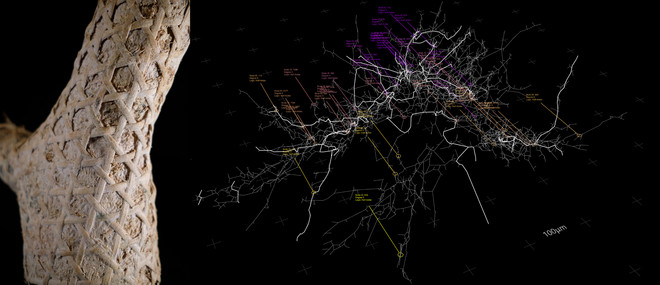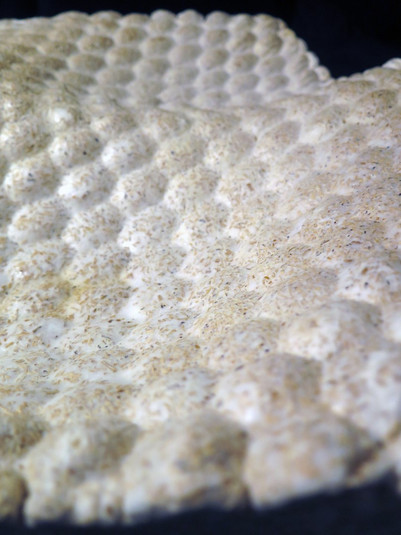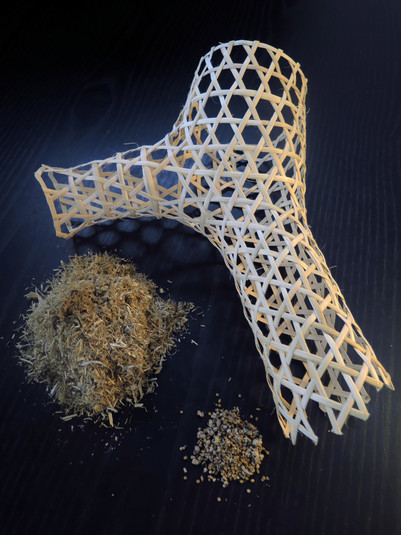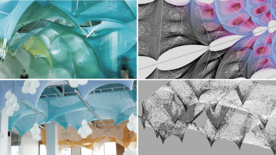
Fungal Architectures

Fungal Architectures is a cross-disciplinary research project that seeks to develop a fully integrated structural and computational living substrate using fungal mycelium for the purpose of growing architecture.
To achieve this goal we have assembled a consortium comprised of architects (CITA), computer scientists/biophysicists (UWE), mycologists (UU) and industry experts in mycelium-based technologies (MOGU). The project is funded for three years under EU H2020 FET-Open grant agreement 858132.

Background and Motivation
As a primary resource consumer, the building industry faces unprecedented challenges in needing to reduce the environmental impact of current consumption practices. This applies to both the construction of the built environment and resource consumption during its occupation and use. Where incremental improvements to current practices can be realised, these benefits are overshadowed by the projected scale of demand due to increasing population growth and urbanisation. Against the backdrop of this grand societal challenge, it is necessary to explore disruptive approaches in how material is sourced, processed and assembled to address the magnitude of these challenges sustainably. This also presents an opportunity to seek out new architectural opportunities & objectives and to embody new values.
Primary Objectives
Building upon contemporary biofabrication approaches, we propose to develop a living mycelium structural substrate. We also propose to exploit the inherent computational capabilities of this living substrate by functionalising it with nanoparticles and polymers to make mycelium-based electronics. This combined structural and computational substrate will implement sensorial fusion and decision making in the fungal electronics to support and steer the growth of monolithic buildings. Fungal buildings will grow and repair themselves, sense and adapt to the environment, perform resource balancing and connect to broader ecological systems in robust ways.

Targeted Breakthrough Innovations
The project targets four groundbreaking and breakthrough innovations:
- Biofabrication - cultivation of metre length scale structures through new growth and cultivation protocols for large scale living mycelium networks
- Functionalisation - changing the electrical and mechanical properties of the mycelium network, with new methodologies for localising specific synthetic properties within mycelium
- Computing - implementation of information processing on mycelial networks, with new methodologies and experimental implementations of hybrid living electronic and computing circuits
- Designing - development of design rules and construction logics together with the development of architectural tools, systems and methods for designing, realising and evaluating living architectures


Novel Construction Concept

Designing and growing fungal architectures presents challenges to conventional methods of architectural representation and construction, demanding new methods and approaches. We are investigating a novel construction concept that integrates mycelium composites with sparse Kagome weaves that act as a combined stay-in-place scaffold and reinforcement. This investigation is structured around four objectives:
- development of automated production of weave/growth scaffolds using robotics
- characterisation of mechanical properties to inform numerical models
- defining design rules that integrate spatial, structural and computational properties towards architectural objectives
- development of a persistent model that couples the living physical artifact with an active design model for steering processes of adaptation towards evolving or changing high-level architectural goals

References
Adamatzky, A., Ayres, P., Belotti, G. and Wosten, H. (2019) Fungal architecture. arXiv preprint arXiv:1912.13262
Adamatzky, A., Gandia, A., Ayres, P., Wösten, H. and Tegelaar, M. (2021) Adaptive Fungal Architectures. LINKs-series, 5, pp.66-77















